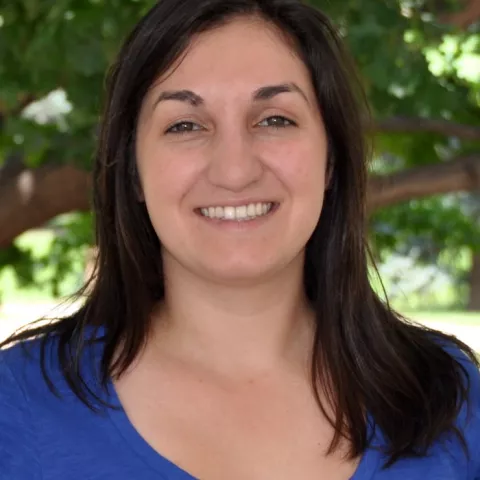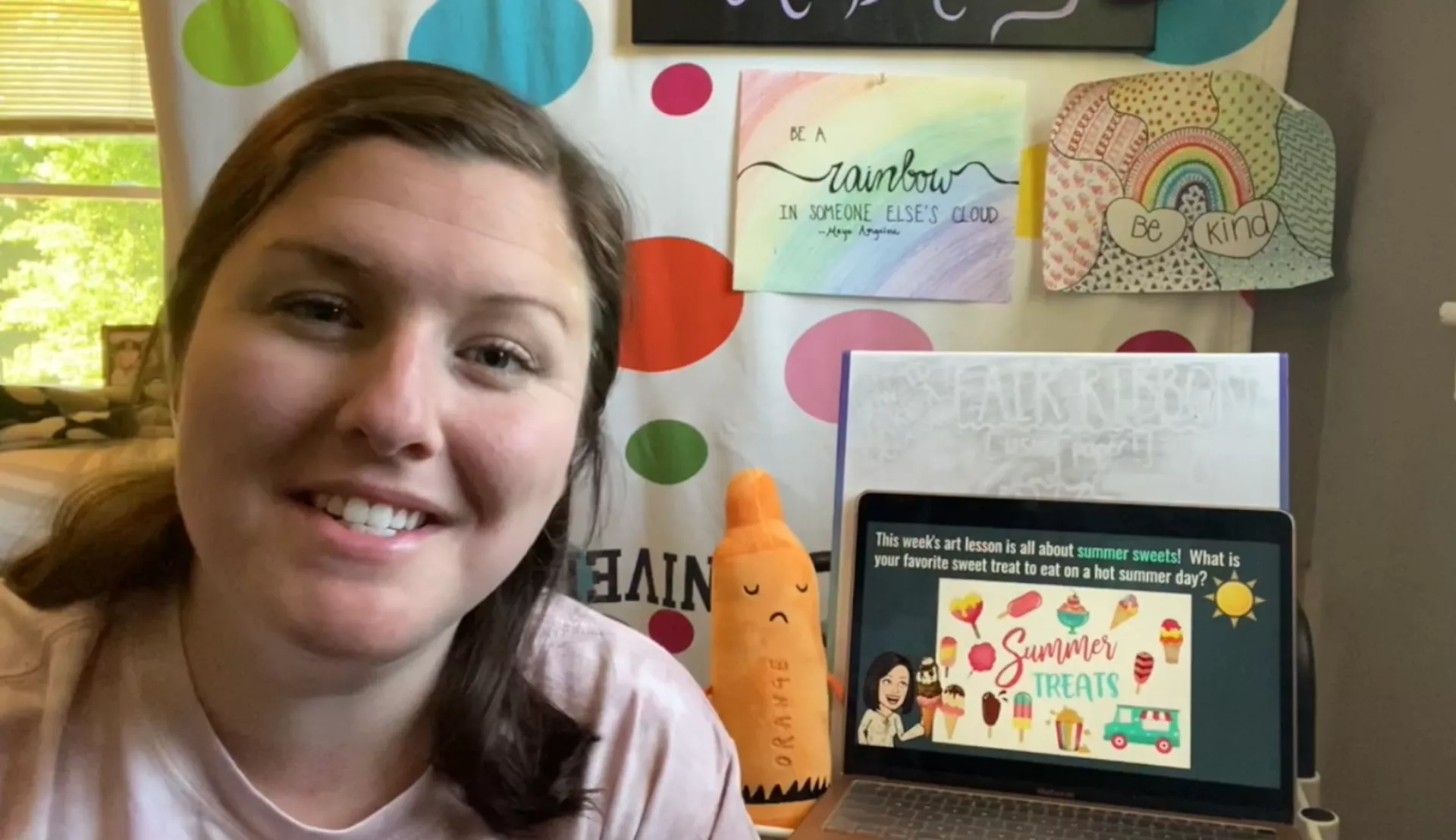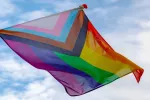Key Takeaways
- The challenges are clear: It's hard to get the band together—or any group of young artists—with today's pandemic-related restrictions.
- But it's not impossible. Knowing arts education is critical to students, educators are finding ways to connect with students through technology and other creative approaches.
Not even a pandemic can silence the dramatic speech of teenage actors or suppress the joyful printmaking of elementary-school artists. But this year, arts educators have had to get more creative than ever.
How do you stage Shakespeare’s Romeo & Juliet when local regulations require your teenage lovers to stand at least 6 feet apart? At Westwood High School in the Boston suburbs, longtime theater teacher Jim Howard found a solution: His cast first rehearsed for months outside, then recorded their lines. Those audio tracks were merged with images from a graphic-novel version of the play to create an animated film.
After 25 years as an educator, Howard knows that the work done during rehearsals—the deep dives into scripts, the conversations around a playwright’s intent and tone—matter more to student learning than performances. This fall’s approach preserved that value, while providing a pandemic-safe performance for community members.
Across the nation, arts educators have been similarly challenged. How do you preserve what’s important in arts education—the creativity, the social-emotional learning, the fuel for what Sir Ken Robinson famously called “the power of the imaginative mind”—while navigating virtual learning or physical distancing?
With a dash of creativity and a dollop of technology, it seems.
The Power of Technology
Inside Christine Doherty’s Franklin, Massachusetts, art room, her usual groupings of desks, where students collaborate and inspire each other, have been split up and spaced six feet apart. It could be a grim tableau — think “American Gothic” but with more physical distancing.
But Doherty has found a way to bridge the gap with technology. Last spring, when schools first physically closed, she began recording instructional YouTube videos for at-home students. Now, she’s got both virtual and in-school students—at the same time—and the videos are still helpful. Whether they’re sitting at their kitchen table or classroom desk, every student has an excellent view of her skills demonstrations.
Plus, she only has to teach a skill once, on video, and then can play it over and again. “Upfront, it’s a lot of work,” says Doherty, who typically creates the instructional videos on her own time, at night and on weekends. (She uses her daily half-hour of planning time to clean and prepare her classroom for in-person instruction.)
“But it’ll help me in the long run because hopefully I’ll be using them for years.”
Doherty uses Screencastify to record the videos, and this year switched to Google Meet, her district’s preferred platform, to share them with students and also with her elementary art colleagues across the district.
“The pandemic has enabled so much more collaboration than before,” she says. “I’ve seen techniques done in new ways, skills taught in ways I never would have thought to teach them. This is an opportunity to see how each other teaches!”
Getting the Band Back Together…
Meanwhile, instrumental music and chorale teachers are working hard to make sure 2020 isn’t the year the music died.
At Charleston High School in Illinois, choir director Juliane Sharp has moved her classes into the auditorium, so that masked students can sing 10-12 feet apart. Band director John Wengerski also has divided his ensemble, and is using “instrument sacks” to contain respiration.
“These are the things [students] need to do to keep being able to do what they love,” Sharp told a local newspaper.

Still, music educators have had to sacrifice much of what they love this year. “Last year we started our very first orchestra, and I got so many violins, in so many sizes, for second- through fifth-graders” says Colorado elementary music teacher Yolanda Calderón. “This year, I doubled our inventory — and not a single instrument has been touched. It’s so sad!”
To limit contact between groups of students in her school’s hallways, Calderón and her arts colleagues have closed their classrooms. Instead of students coming to them, they’re rolling carts of supplies to grade-level classrooms. “I’m taking this dog-and-pony show on the road!” she says. This means Calderón has had to set aside her ukuleles and xylophones—how could she wheel 30 ukeleles through the hallways?
For safety reasons, she’s also silenced the perennial project of fourth-grade students: the recorder. (Many parents may not grieve this particular development…) “Oh no, we cannot,” she says. “They’re blowing into it! It’s basically a COVID projector!”
As an alternative, Calderón is relying more on smaller, percussive Orff instruments, like drums, triangles, finger cymbals, even Tupperwares for her at-home students, and also turning her attention to online resources, like Chrome music lab and QuaverMusic, which her students can use to compose music, mix audio tracks, and more.
“This week my fourth and fifth graders were low-key Foley artists!” she says. (A Foley artist is the person who adds everyday sound effects to movies, like clocks ticking or cars backfiring.) In this project, Calderón’s students worked with a library of mini-sounds, like ocean waves, to mix together three audio tracks for short videos. “We talked about balance, which is a very fundamental musical concept,” she notes.
The pandemic will end eventually, but many of these new resources will persist, educators say.
“I think, like any seasoned teacher, I’m going to recognize that everything I take from this year will go into my bag of tricks and I’ll pull it out as I need it,” says Howard. “As much as we want to put this experience behind us, I don’t think forgetting this year would be valuable.”







